Key Takeaways
- Strategic Evolution: Navigate the dynamic SaaS SEO landscape with cutting-edge strategies tailored for 2024, ensuring your platform stays ahead in the digital race.
- Content Mastery: Harness the power of compelling content, from evergreen pieces to multimedia experiences, to not just attract but engage and retain your target audience.
- Local Precision and Social Synergy: Optimize your SaaS SEO strategy by honing in on local markets and harmonizing your efforts with social media, amplifying your brand’s visibility and impact.
In the rapidly evolving digital landscape of 2024, where Software as a Service (SaaS) has become the cornerstone of technological innovation and business efficiency, the intersection of SaaS and SEO stands as a pivotal force driving the success of online enterprises.
Welcome to the comprehensive and authoritative guide that unveils the intricacies of SaaS SEO, aptly titled “SaaS SEO: The Complete Definitive Guide in 2024.”
In this era of heightened competition and ever-changing algorithms, navigating the digital realm requires more than just a robust SaaS solution – it demands a strategic approach to Search Engine Optimization (SEO) tailored specifically for the dynamic SaaS ecosystem.
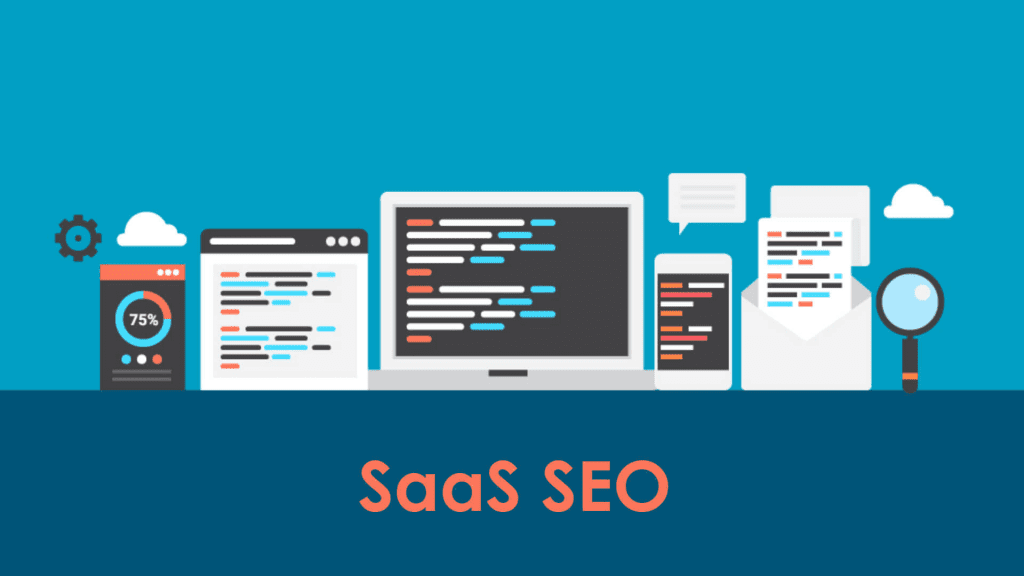
Why SaaS SEO Matters in 2024
As we delve into the heart of this guide, it becomes imperative to grasp the profound impact that SEO holds for SaaS businesses in the current landscape.
Beyond the conventional realms of product development and user experience, visibility on search engines has emerged as the linchpin for sustained growth and market dominance.
The symbiotic relationship between SaaS and SEO is more pronounced than ever, with organic search results often serving as the primary gateway for potential customers to discover, evaluate, and adopt cutting-edge SaaS solutions.
The Unprecedented Role of SEO in SaaS Growth
In an era where the digital realm is flooded with a plethora of SaaS offerings, standing out from the crowd requires strategic finesse.
This guide is designed to be your compass in the complex world of SaaS SEO, equipping you with insights, strategies, and tactics to not only enhance your online presence but to also catapult your SaaS venture to the forefront of your industry.
We’ll unravel the intricacies of SEO that are uniquely tailored to the nuanced demands of the SaaS sector, demystifying the challenges that often accompany such a specialized field.
What Makes This Guide Definitive in 2024
As we embark on this journey, it’s essential to understand what sets this guide apart.
Crafted in 2024, it is an up-to-the-minute compendium that reflects the latest trends, algorithms, and best practices shaping the realm of SaaS SEO.
The strategies laid out herein are not relics of the past but rather cutting-edge approaches designed to align seamlessly with the present digital landscape and anticipate the future shifts that lie ahead.
Whether you’re a seasoned SaaS professional, an ambitious entrepreneur, or an SEO enthusiast, this guide promises to be your go-to resource for unlocking the full potential of SaaS SEO in 2024.
A Roadmap to Comprehensive SaaS SEO
As we progress through each chapter, we’ll embark on a journey that encompasses the entire spectrum of SaaS SEO.
From deciphering the landscape of SaaS SEO and conducting advanced keyword research to mastering the intricacies of on-page and technical SEO for SaaS platforms, we leave no stone unturned.
The guide will also delve into the realm of content marketing, link building, local SEO, and the symbiotic relationship between SaaS and social media, providing you with a holistic roadmap to navigate the multifaceted world of SEO optimization tailored specifically for the SaaS industry.
Get ready to elevate your SaaS venture to unprecedented heights as we embark on this enlightening exploration of “SaaS SEO: The Complete Definitive Guide in 2024.” Your journey to SaaS success begins now.
But, before we venture further, we like to share who we are and what we do.
About AppLabx
From developing a solid marketing plan to creating compelling content, optimizing for search engines, leveraging social media, and utilizing paid advertising, AppLabx offers a comprehensive suite of digital marketing services designed to drive growth and profitability for your business.
AppLabx is well known for helping companies and startups use SaaS SEO to drive web traffic to their websites and web apps.
At AppLabx, we understand that no two businesses are alike. That’s why we take a personalized approach to every project, working closely with our clients to understand their unique needs and goals, and developing customized strategies to help them achieve success.
If you need a digital consultation, then send in an inquiry here.
SaaS SEO: The Complete Definitive Guide in 2024
- Understanding the Landscape of SaaS SEO
- Keyword Research for SaaS
- On-Page SEO Strategies for SaaS
- Technical SEO for SaaS
- Content Marketing for SaaS SEO
- Link Building in the SaaS Industry
- Local SEO Strategies for SaaS Companies
- SaaS and Social Media SEO
- Monitoring and Analytics for SaaS SEO
1. Understanding the Landscape of SaaS SEO
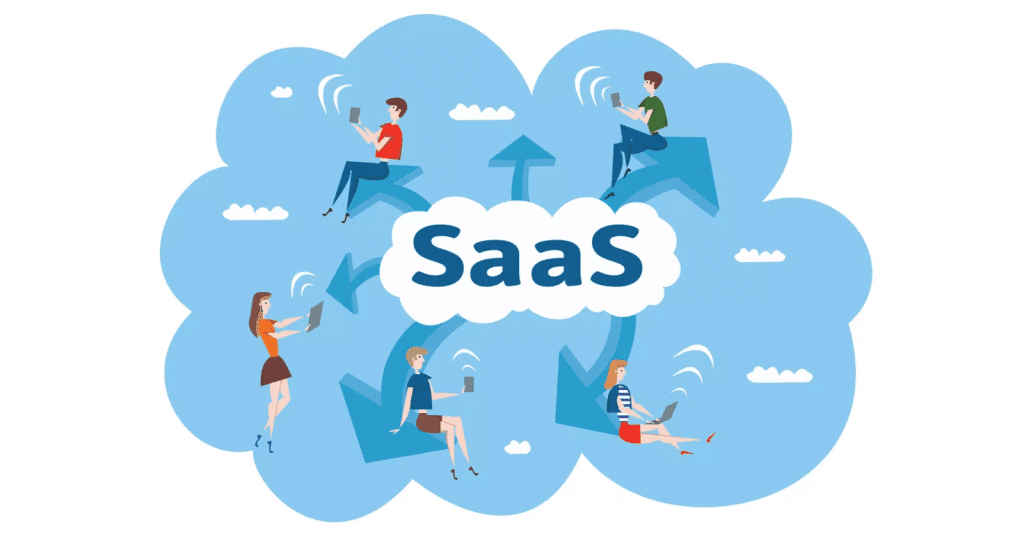
Current Trends in SaaS SEO
Rise of Conversational Search
In 2024, the prevalence of voice-activated devices and smart assistants has reshaped user search behaviour.
Optimizing for conversational queries becomes paramount, as people interact with search engines in a more natural, spoken language.
For instance, queries like “Best SaaS solutions for project management” are now more common, emphasizing the need for conversational keyword optimization.
Video Content Dominance
The consumption of video content continues to soar. Videos will account for a whopping 82% of all consumer internet traffic by 2025. SaaS brands can leverage this trend by incorporating video content in their SEO strategy.
Explainer videos showcasing the functionalities of SaaS products or video testimonials can enhance user engagement and contribute to SEO performance.
Example: HubSpot’s use of video tutorials and product demos on its YouTube channel.
Key Challenges SaaS Companies Face in SEO
Niche Competition and Keyword Saturation
The SaaS landscape is highly competitive, with numerous players vying for visibility. Identifying and targeting relevant keywords that aren’t oversaturated becomes a challenge.
Balancing User Experience and SEO
As search engines increasingly prioritize user experience, finding the equilibrium between a user-friendly interface and SEO optimization is a delicate task.
Google’s Core Web Vitals, focusing on factors like page speed and mobile responsiveness, have become crucial ranking factors, making it essential for SaaS companies to prioritize these elements.
Example: Salesforce’s mobile-responsive website design and quick-loading pages.
The Role of SEO in SaaS Growth
Driving Organic Traffic and User Acquisition:
SEO serves as the backbone for organic traffic, contributing significantly to user acquisition.
53% of all website traffic comes from organic search. SaaS companies that strategically harness SEO can tap into this substantial pool of potential users.
Establishing Authority and Trust
A robust SEO strategy not only boosts visibility but also plays a pivotal role in establishing authority and trust. 75% of users never scroll past the first page of search results.
Therefore, appearing on the first page through SEO efforts lends credibility to SaaS brands, fostering trust among users.
Example: Slack’s thought leadership articles and whitepapers contribute to their SEO and industry authority.
In the intricate landscape of SaaS SEO, staying abreast of trends, overcoming challenges, and understanding the pivotal role of SEO in growth are foundational steps.
As we proceed through this guide, we’ll delve deeper into the nuances of keyword research, on-page and technical SEO, content marketing, and more, equipping you with the tools to navigate and conquer the ever-evolving SaaS SEO landscape in 2024.
2. Keyword Research for SaaS
In the realm of SaaS SEO, mastering keyword research is a cornerstone for achieving optimal visibility and attracting the right audience.
This chapter delves into the intricacies of identifying and leveraging keywords tailored for the Software as a Service (SaaS) industry.

Identifying Relevant SaaS Keywords
SaaS Industry-Specific Terms
Begin by targeting keywords directly related to the SaaS industry.
Examples include “cloud-based project management,” “subscription billing software,” or “enterprise resource planning SaaS.” Leveraging industry-specific terms ensures your content aligns with the language your target audience uses.
User Intent-Focused Keywords
Understanding user intent is critical. Long-tail keywords that reflect specific user queries, such as “how to choose CRM software for startups” or “benefits of cloud-based collaboration tools,” can attract users actively seeking information or solutions.
Example: Utilize tools like Google Keyword Planner, Semrush, or Ahrefs to identify high-volume, industry-specific keywords.
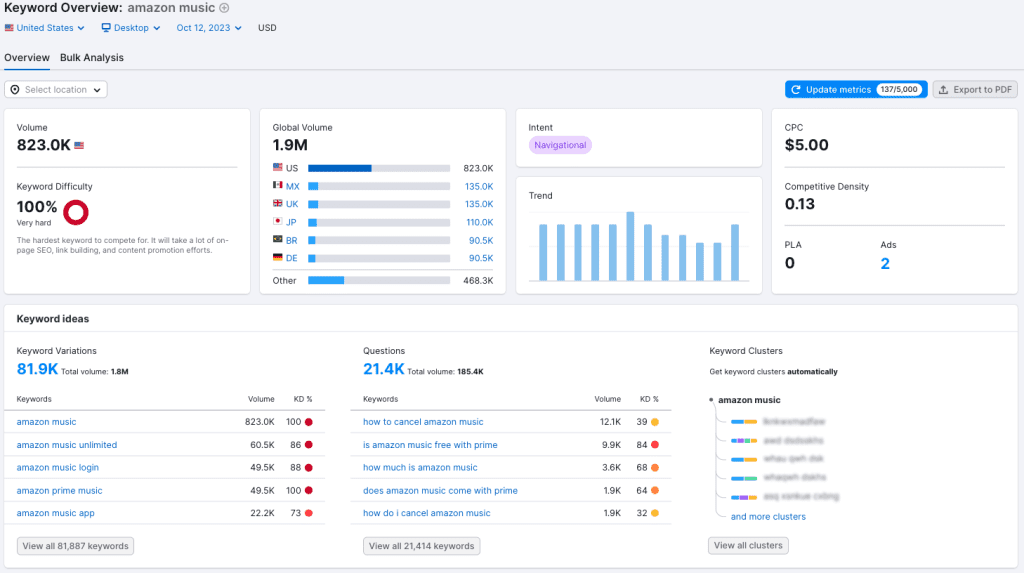
Long-Tail Keywords for Niche Targeting
Emphasis on Solution-Oriented Phrases
Long-tail keywords often convey specific user needs and solutions.
For instance, phrases like “AI-powered marketing automation for e-commerce” or “SaaS for agile project management” can attract users seeking precise solutions within the SaaS landscape.
Competitor Analysis for Long-Tail Insights
Analyze competitors’ content and target long-tail keywords they may have overlooked.
Tools like Semrush or SpyFu can reveal gaps in your competitors’ keyword strategy, providing opportunities for your SaaS brand to fill those gaps.
Example: Ahrefs’ Content Gap tool helps identify keywords your competitors rank for, but you do not.
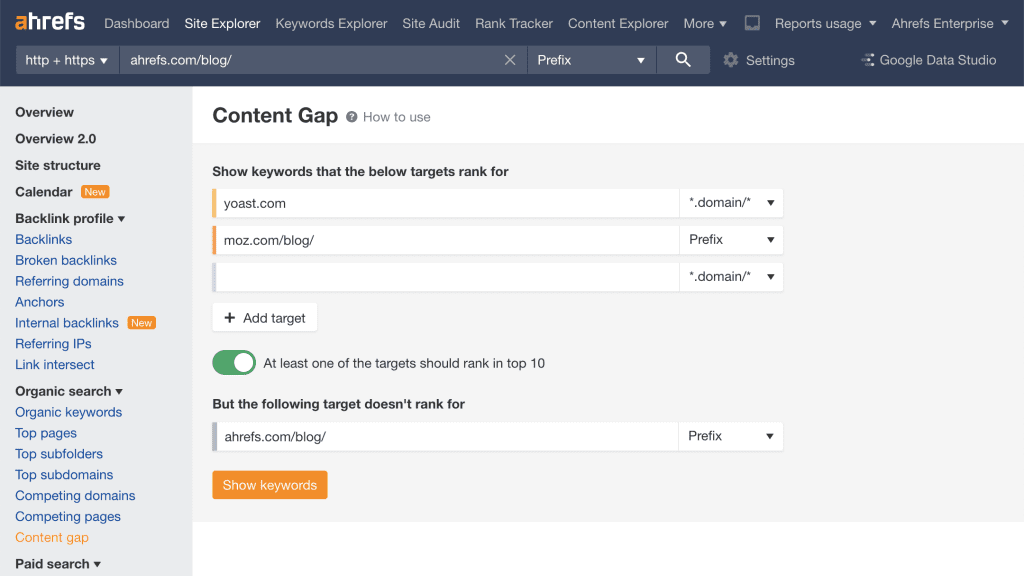
Competitor Analysis for Keyword Insights
Identify Competitors’ Top-Performing Keywords
Examine the keywords that competitors in the SaaS space are ranking for. Tools like Semrush or SimilarWeb can provide insights into competitors’ organic search performance.
Evaluate Keyword Difficulty and SERP Features
Assess the difficulty of ranking for specific keywords using tools like Moz or Ahrefs. Additionally, analyze SERP features, such as featured snippets or knowledge panels, to tailor your strategy to compete effectively.
Example: According to Semrush, the keyword “best project management software” has a high search volume, but it’s also highly competitive.
Keyword Trends and Seasonality
Stay Updated on Industry Trends
SaaS trends evolve rapidly. Monitor industry news, forums, and social media to identify emerging trends. Incorporate trending keywords to ensure your content remains relevant and aligns with current industry discussions.
Consider Seasonal and Cyclical Trends
Some SaaS solutions may experience seasonal demand. For instance, tax-related software may see increased searches during tax season. Anticipate these trends and adjust your keyword strategy accordingly.
Example: Google Trends can provide insights into the seasonality of specific keywords.
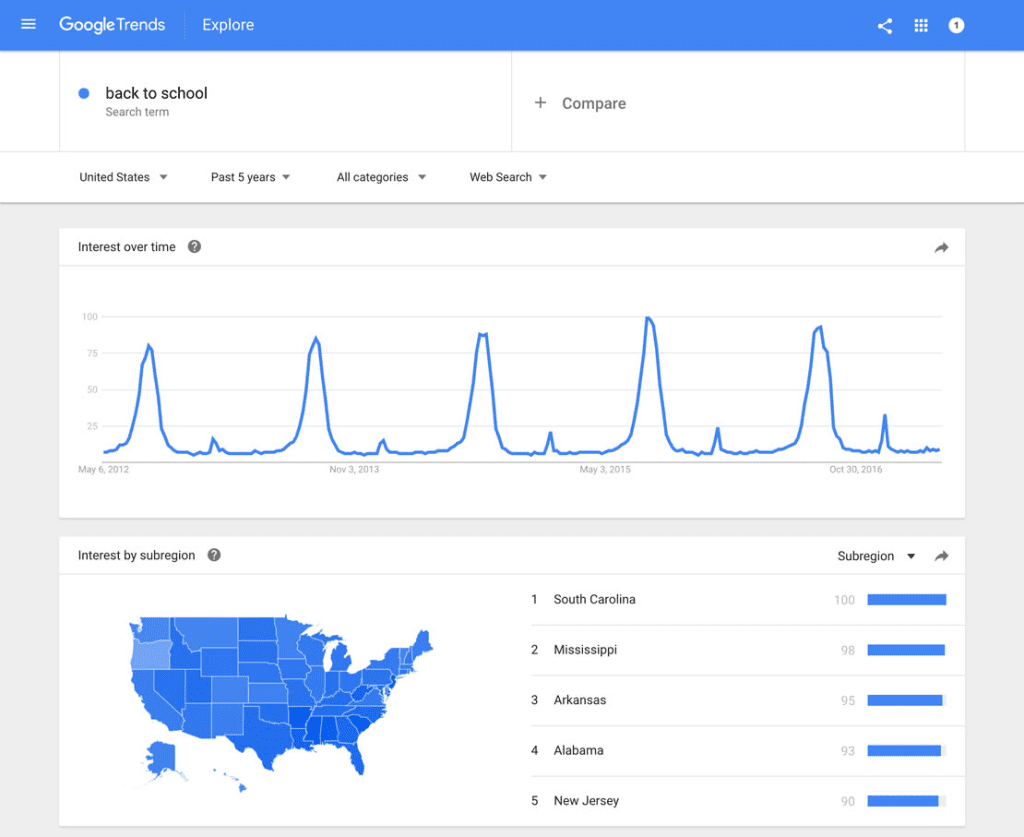
Keyword research for SaaS demands a strategic blend of industry-specific terms, long-tail precision, competitor analysis, and a keen awareness of evolving trends.
As we progress through this guide, we’ll unravel the next layers of SaaS SEO, exploring on-page optimization strategies, technical SEO considerations, and content marketing tactics tailored for the dynamic SaaS landscape in 2024.
3. On-Page SEO Strategies for SaaS
Effective on-page SEO is crucial for SaaS companies aiming to rank higher in search engine results and enhance user experience. In this chapter, we’ll explore comprehensive on-page SEO strategies tailored specifically for the dynamic landscape of Software as a Service (SaaS).
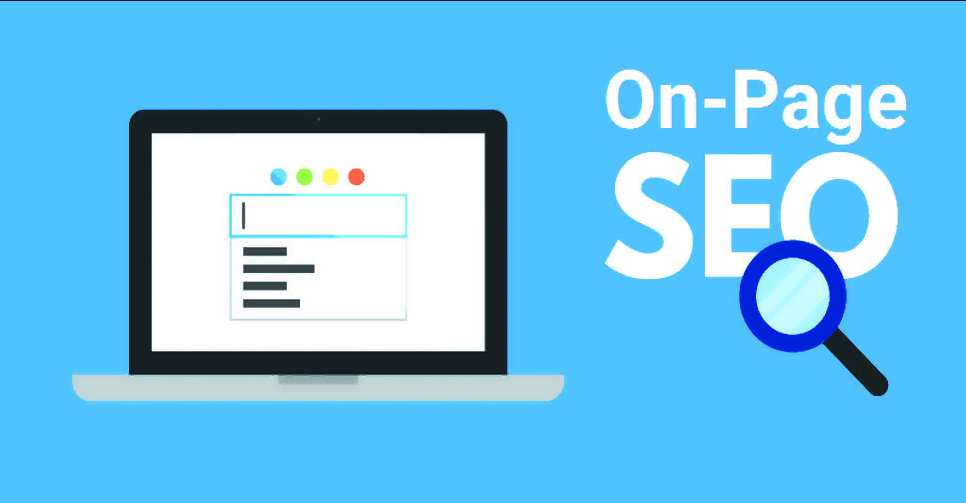
Optimizing Website Structure and Navigation
Importance of User-Friendly Design
User experience is a critical factor in on-page SEO. 53% of visits are abandoned if a mobile site takes longer than 3 seconds to load.
Prioritize a clean, intuitive design that ensures easy navigation, reducing bounce rates and improving SEO performance.
Strategic Use of Header Tags
Header tags (H1, H2, H3, etc.) provide a hierarchical structure to your content. Properly utilizing these tags helps search engines understand the content hierarchy and can improve the visibility of key SaaS-related keywords.
Example: Salesforce’s website features a clear and intuitive navigation menu, allowing users to seamlessly explore various SaaS solutions.

Crafting Compelling Meta Titles and Descriptions
Keyword-Rich Meta Titles
Craft meta titles that not only capture attention but also incorporate relevant SaaS keywords. Aim for a concise yet informative title that communicates the essence of the page.
Engaging Meta Descriptions
Meta descriptions serve as a brief preview of the page content. Create compelling meta descriptions that entice users to click while incorporating key SaaS-related terms.
Example: Slack’s meta title and description for its collaboration software succinctly communicate its value proposition and include relevant keywords.
Implementing Schema Markup for Rich Snippets
Enhancing Search Result Visibility
Schema markup enables search engines to understand the context of your content, potentially leading to the display of rich snippets in search results.
This can enhance visibility and attract users by providing additional information about your SaaS offerings directly in the search results.
Types of Schema Markup for SaaS
Explore schema markup options specific to SaaS, such as Product schema for individual software products or FAQ schema for pages answering common user queries. Implementing these can increase the chances of your pages appearing as rich snippets.
Example: Implementing Product schema markup for individual SaaS products can display star ratings and other details directly in search results.
On-page SEO strategies for SaaS go beyond traditional optimization techniques.
As we delve deeper into this guide, we’ll explore technical SEO considerations, content marketing strategies, and ways to leverage backlinks effectively in the competitive SaaS landscape of 2024.
Stay tuned for a comprehensive approach that ensures your SaaS brand not only ranks high but also delivers a seamless user experience.
4. Technical SEO for SaaS
Technical SEO forms the backbone of a successful SaaS SEO strategy, influencing how search engines crawl, index, and rank your website. In this chapter, we’ll explore advanced technical SEO considerations tailored for the dynamic landscape of Software as a Service (SaaS).

Mobile Optimization for SaaS Platforms
Mobile-First Indexing
As of 2021, Google has shifted to mobile-first indexing, meaning it primarily uses the mobile version of a site for ranking and indexing. Prioritize responsive design to ensure a seamless experience across devices, enhancing both user experience and search rankings.
Page Speed Optimization
Page speed is a crucial factor for both user satisfaction and SEO. As page load time goes from one second to 10 seconds, the probability of a mobile site visitor bouncing increases by 123%.
Optimize images, leverage browser caching, and minimize server response time for faster loading.
Example: HubSpot’s mobile-responsive design ensures a consistent and user-friendly experience across various devices.
Page Speed and Performance Optimization
Core Web Vitals
Google’s Core Web Vitals, including metrics like Largest Contentful Paint (LCP) and Cumulative Layout Shift (CLS), are now essential ranking factors. Prioritize optimizing these metrics to provide a better user experience and potentially boost search rankings.
Caching Strategies
Implement browser caching to store static files locally, reducing load times for returning visitors. Utilize Content Delivery Networks (CDNs) to distribute content across servers globally, further improving loading speeds.
Example: Salesforce employs CDN services to deliver its content efficiently to users worldwide, enhancing overall performance.
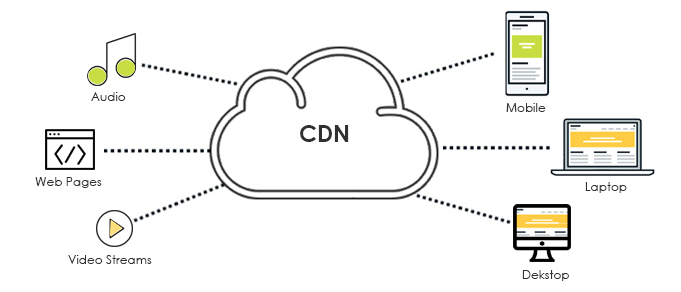
Canonicalization and URL Structure Best Practices
Canonical Tags for Duplicate Content
SaaS websites may have similar content across different pages. Implement canonical tags to indicate the preferred version of a page, preventing duplicate content issues that can impact search rankings.
SEO-Friendly URL Structure
Craft URLs that are both user-friendly and SEO-friendly. Use descriptive keywords in the URL, avoid unnecessary parameters, and ensure a logical hierarchy in the structure for better search engine understanding.
Example: Slack’s URL structure follows a logical hierarchy, enhancing both user experience and search engine crawlers’ understanding of the content.
Structured Data Markup
Importance of Structured Data
Structured data markup provides search engines with additional context about your content, potentially leading to rich snippets in search results. For SaaS, consider marking up product information, reviews, and organizational details.
JSON-LD Implementation
Utilize JSON-LD (JavaScript Object Notation for Linked Data) for structured data implementation. This method is recommended by Google and ensures a clean separation between content and markup.
Example: Implementing JSON-LD markup for SaaS product reviews can lead to star ratings displayed in search results.
Technical SEO for SaaS is a continuous process that demands a proactive approach to evolving search engine algorithms.
In the subsequent sections of this guide, we’ll delve into content marketing strategies, effective link-building techniques, and local SEO considerations, providing you with a comprehensive roadmap to navigate the intricate SaaS SEO landscape in 2024.
5. Content Marketing for SaaS SEO
Content marketing plays a pivotal role in elevating your SaaS brand’s online presence, establishing authority, and driving organic traffic. In this chapter, we’ll explore effective content marketing strategies tailored for the dynamic landscape of Software as a Service (SaaS).

Developing High-Quality, Valuable Content
Understanding User Intent
Craft content that aligns with the diverse needs of your target audience. Analyze user intent behind SaaS-related queries and create content that provides comprehensive solutions, insights, or guides.
Evergreen Content Creation
Invest in creating evergreen content that remains relevant over time. Evergreen content can continue to attract organic traffic and serve as a foundational resource for your audience.
Example: Buffer’s blog features evergreen content, such as “The Complete Guide to Social Media for B2B,” providing valuable insights for their target audience.
Creating a Content Calendar for Consistent Output
Regularity and Consistency
Establish a consistent content publishing schedule. Search engines favour websites that regularly produce fresh, relevant content. A content calendar helps ensure a steady flow of valuable information.
Aligning Content with SEO Strategy
Coordinate your content calendar with your SEO strategy. Identify key SaaS-related keywords and plan content creation around these keywords to reinforce your website’s relevance in search engine results.
Example: HubSpot maintains a content calendar that aligns with both industry trends and their target audience’s search behaviour.
Leveraging Video and Other Multimedia Content
Video as a Dominant Medium
Video content continues to dominate online consumption. Incorporate video content to showcase SaaS product functionalities, customer testimonials, and educational materials.
Infographics and Visual Data Representation
Presenting complex information through infographics and visually appealing formats enhances user engagement. Visual content is more shareable, contributing to increased brand visibility.
Example: Adobe creatively uses infographics to convey complex concepts related to its creative software, enhancing user understanding.
Aligning Content with User Journey
Awareness, Consideration, Conversion
Map your content to different stages of the user journey. Tailor content addresses awareness, consideration, and conversion stages, providing valuable information that guides users through the decision-making process.
Educational Resources and Tutorials
Create educational resources and tutorials that empower users to maximize the benefits of your SaaS products. Address common challenges, provide solutions, and position your brand as an industry authority.
Example: Zendesk’s content includes a comprehensive knowledge base and tutorials, catering to users at various stages of their customer support journey.
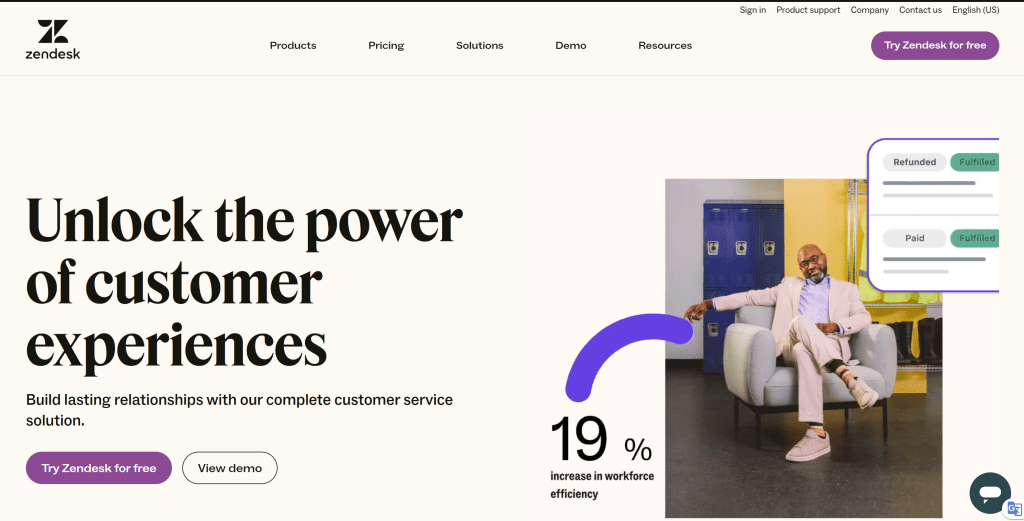
Content marketing for SaaS SEO is a dynamic and evolving process. By consistently delivering valuable, relevant content that aligns with user intent, you not only enhance your SEO performance but also foster a loyal audience.
In the subsequent sections of this guide, we’ll explore effective link-building strategies, local SEO considerations, and ways to monitor and analyze your SaaS SEO efforts for continuous improvement.
6. Link Building in the SaaS Industry
Link building is a cornerstone of SaaS SEO, contributing significantly to organic search rankings and overall online visibility. In this chapter, we’ll explore effective link-building strategies tailored for the dynamic landscape of Software as a Service (SaaS).

Building Authoritative Backlinks for SaaS Websites
Outreach to Industry Publications
Forge partnerships with reputable industry publications, leveraging guest posting opportunities. Backlinks from authoritative sources enhance your website’s credibility in the eyes of search engines.
Collaborate with Influencers and Thought Leaders
Engage with influencers and thought leaders in the SaaS industry. Collaborate on content, interviews, or joint webinars, fostering backlinks from their platforms and expanding your reach.
Example: Slack collaborates with industry influencers for webinars and thought leadership articles, earning authoritative backlinks.
Guest Posting in the SaaS Niche
Identify High-Quality Platforms
Identify and contribute to high-quality platforms in the SaaS niche. Guest posting on reputable SaaS blogs or industry forums not only builds backlinks but also positions your brand as an industry expert.
Anchor Text Optimization
Optimize anchor text to include relevant SaaS keywords. This helps search engines understand the context of the linked content and boosts the SEO value of the backlink.
Example: Zendesk strategically guest posts on industry blogs, utilizing anchor text that includes relevant keywords.
Earning Links Through Partnerships and Collaborations
Strategic Alliances with SaaS Companies
Forge partnerships with other SaaS companies, creating opportunities for mutual backlinking. Collaboration on joint projects, webinars, or co-authored content can lead to valuable links.
Participate in Industry Events and Conferences
Participate in virtual or physical industry events and conferences. Being featured on event websites, speaker profiles, or sponsor pages provides authoritative backlinks.
Example: Adobe forms partnerships with other creative software companies, leading to collaborative content and reciprocal backlinks.
Monitoring and Disavowing Low-Quality Backlinks
Regular Backlink Audits
Regularly audit your backlink profile using tools like Google Search Console or Ahrefs. Identify and disavow low-quality or spammy backlinks that could potentially harm your SEO.
Disavow Tool Utilization
Google’s Disavow Tool allows you to request the search engine to ignore specific backlinks. Use this tool cautiously to disavow any undesirable links and maintain a healthy backlink profile.
Example: Moz’s Link Explorer enables a comprehensive analysis of a website’s backlink profile, facilitating the identification of potentially harmful links.

Link building in the SaaS industry is a strategic endeavour that requires a combination of outreach, collaboration, and vigilant monitoring.
As we progress through this guide, we’ll explore local SEO strategies, the impact of social media on SaaS SEO, and ways to monitor and analyze your efforts for continuous improvement in the competitive landscape of 2024.
7. Local SEO Strategies for SaaS Companies
Local SEO is a critical component for SaaS companies targeting specific geographical markets.
In this chapter, we’ll explore tailored local SEO strategies to enhance the visibility and reach of Software as a Service (SaaS) businesses.

Optimizing Google My Business for Local Presence
Claim and Verify Your Google My Business (GMB) Listing
Claim and verify your GMB listing to ensure accurate and up-to-date information about your SaaS company. This is essential for local search visibility and the Knowledge Panel.
Complete GMB Profile with Relevant Information
Provide comprehensive details in your GMB profile, including business hours, contact information, and a detailed description of your SaaS offerings. Rich, detailed profiles contribute to higher local search rankings.
Example: Slack’s GMB listing includes detailed information, ensuring users have accurate details about their services.
Localized Keyword Optimization
Incorporate Location-Specific Keywords
Integrate location-specific keywords naturally into your website content, meta tags, and GMB profile. This helps search engines associate your SaaS offerings with specific regions.
Use Localized Landing Pages
Create dedicated landing pages for different locations you target. Tailor content to address the unique needs or preferences of users in those areas.
Example: Salesforce incorporates localized keywords and landing pages to target specific regions, enhancing their local SEO.
Online Reviews and Reputation Management
Encourage Customer Reviews
Actively encourage satisfied customers to leave positive reviews on platforms like Google, Yelp, or industry-specific review sites. Positive reviews contribute to local search ranking and build trust among potential customers.
Respond to Reviews Promptly
Engage with both positive and negative reviews. Responding promptly showcases your commitment to customer satisfaction and helps mitigate the impact of negative feedback.
Example: Zendesk actively encourages users to leave reviews on G2 Crowd, enhancing their online reputation.
Local Link-Building Strategies
Partner with Local Organizations
Forge partnerships with local businesses or organizations. Participate in joint events, sponsorships, or collaborations that can lead to local backlinks and increased visibility.
Join Local Directories and Associations
List your SaaS company in local directories and industry associations. These citations contribute to local SEO and help establish your presence within the community.
Example: Adobe participates in local design events and directories, contributing to their local link-building strategy.
Mobile Optimization for Local Searches
Responsive Design for Mobile Users
Ensure your website is optimized for mobile users. With the increasing prevalence of mobile searches, a responsive design enhances the local search experience.
Local Schema Markup
Implement local schema markup to provide search engines with additional details about your business, such as address, phone number, and operating hours.
Example: HubSpot’s mobile-responsive design and local schema markup contribute to its positive local search presence.
Local SEO strategies for SaaS companies require a nuanced approach that combines localized keyword optimization, reputation management, and strategic link building.
In the following sections of this guide, we’ll explore the impact of social media on SaaS SEO, ways to monitor and analyze your efforts, and the evolving landscape of SEO in 2024.
8. SaaS and Social Media SEO
Social media has become a powerhouse for online visibility and brand awareness, and even impacting search engine optimization (SEO).
In this chapter, we’ll explore the symbiotic relationship between Software as a Service (SaaS) and social media, highlighting strategies to optimize your SaaS SEO through social platforms.

Utilizing Social Media for Brand Visibility
Establishing a Strong Social Presence
Build a robust presence across key social media platforms such as LinkedIn, X (formerly Twitter), and Facebook. A strong social presence contributes to brand visibility and can positively influence search engine rankings.
Leveraging LinkedIn for B2B Visibility
LinkedIn is a powerhouse for B2B interactions. Share thought leadership content, engage in industry discussions and participate in relevant groups to enhance your SaaS company’s visibility among professionals.
Example: Salesforce effectively utilizes LinkedIn for sharing industry insights, and product updates, and engaging with their B2B audience.
Social Signals and SEO Impact
Understanding Social Signals
Social signals, such as likes, shares, and comments, are factors that search engines consider when determining the relevance and popularity of content. Engaging social content can positively impact your SEO.
Content Virality and SEO Boost
Content that goes viral on social media tends to attract more backlinks and mentions, contributing to improved SEO performance. Create shareable content that resonates with your audience.
Example: HubSpot’s viral marketing campaigns on social media contribute to increased brand visibility and organic search traffic.
Social Media as a Content Distribution Channel
Sharing Blog Posts and Resources
Use social media platforms to share blog posts, whitepapers, and other informative resources. This not only drives traffic but also encourages social signals that can influence SEO.
Visual Content for Increased Engagement
Leverage visual content such as infographics, videos, and images. Visual content tends to perform well on social media, leading to higher engagement and increased visibility.
Example: Adobe creatively shares visually appealing content on platforms like Instagram, boosting engagement and brand visibility.
Social Media Advertising and SEO Impact
Paid Social Media Campaigns
Consider paid social media campaigns to amplify your reach. While not a direct SEO factor, increased visibility through paid campaigns can lead to more organic mentions and backlinks.
Facebook and Instagram Ads for Brand Exposure
Utilize targeted ads on platforms like Facebook and Instagram to reach specific demographics. Increased brand exposure through these ads can indirectly contribute to improved SEO.
Example: Slack strategically uses targeted ads on Facebook and Instagram to promote their collaboration platform.
Monitoring Social Media Metrics for SEO Insights
Track Engagement Metrics
Regularly monitor engagement metrics on social media, including likes, shares, and comments. Analyzing these metrics provides insights into the types of content that resonate with your audience.
Social Listening for Brand Mentions
Employ social listening tools to monitor brand mentions and conversations related to your SaaS products. Engaging with your audience and addressing concerns can positively impact brand sentiment and indirectly influence SEO.
Example: Zendesk utilizes social listening tools to promptly respond to customer feedback and address queries.
Social media and SEO are intertwined elements of a comprehensive digital marketing strategy.
By strategically leveraging social platforms, engaging with your audience, and creating shareable content, your SaaS company can enhance its online visibility and positively impact search engine rankings.
As we progress through this guide, we’ll delve into ways to monitor and analyze your SEO efforts, staying ahead in the ever-evolving landscape of SaaS SEO in 2024.
9. Monitoring and Analytics for SaaS SEO
Effective monitoring and analytics are essential components of a successful SaaS SEO strategy. In this chapter, we’ll explore key metrics, tools, and strategies to monitor and analyze the performance of your Software as a Service (SaaS) SEO efforts.

Importance of Monitoring and Analytics
Data-Driven Decision Making
Monitoring and analytics provide valuable insights into the performance of your SEO efforts. Data-driven decision-making ensures that your strategies are aligned with user behaviour and search engine algorithms.
Continuous Improvement
Regular monitoring allows you to identify areas of improvement and adapt your strategy accordingly. The dynamic nature of SEO requires an ongoing commitment to refining and optimizing your approach.
Key Performance Indicators (KPIs) for SaaS SEO
Organic Traffic
Monitor the overall organic traffic to your SaaS website. Tools like Google Analytics provide a comprehensive view of the sources, user behaviour, and performance of organic traffic.
Keyword Rankings
Track the rankings of your target keywords. Tools such as Semrush or Ahrefs offer insights into the positions of your keywords on search engine results pages (SERPs).
Example: Utilizing Ahrefs, you can track the ranking changes of specific SaaS-related keywords over time.
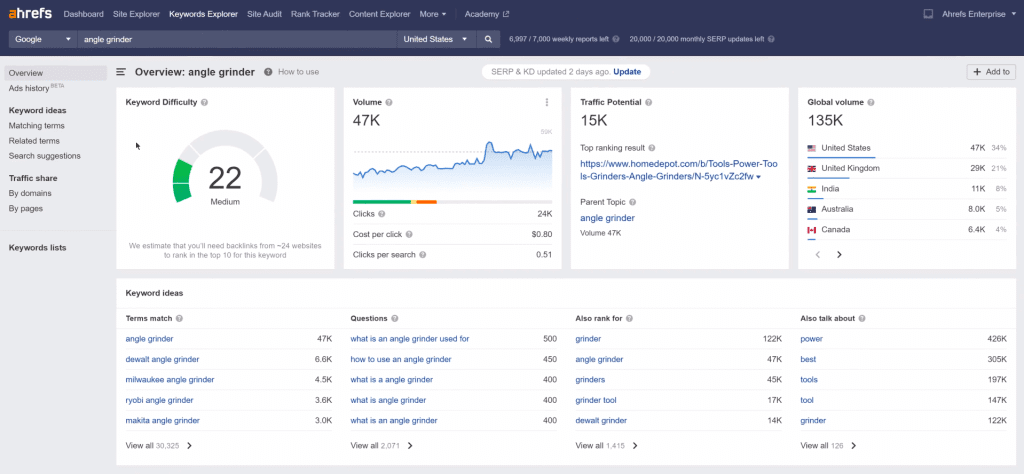
User Engagement Metrics
Bounce Rate
A high bounce rate may indicate that visitors are not finding what they are looking for. Monitor bounce rates to identify pages that may need optimization.
Average Session Duration
Analyzing the average session duration helps gauge the level of engagement. Longer sessions often indicate that users are finding value in your content.
Example: HubSpot uses Google Analytics to track user engagement metrics and optimize content for better performance.
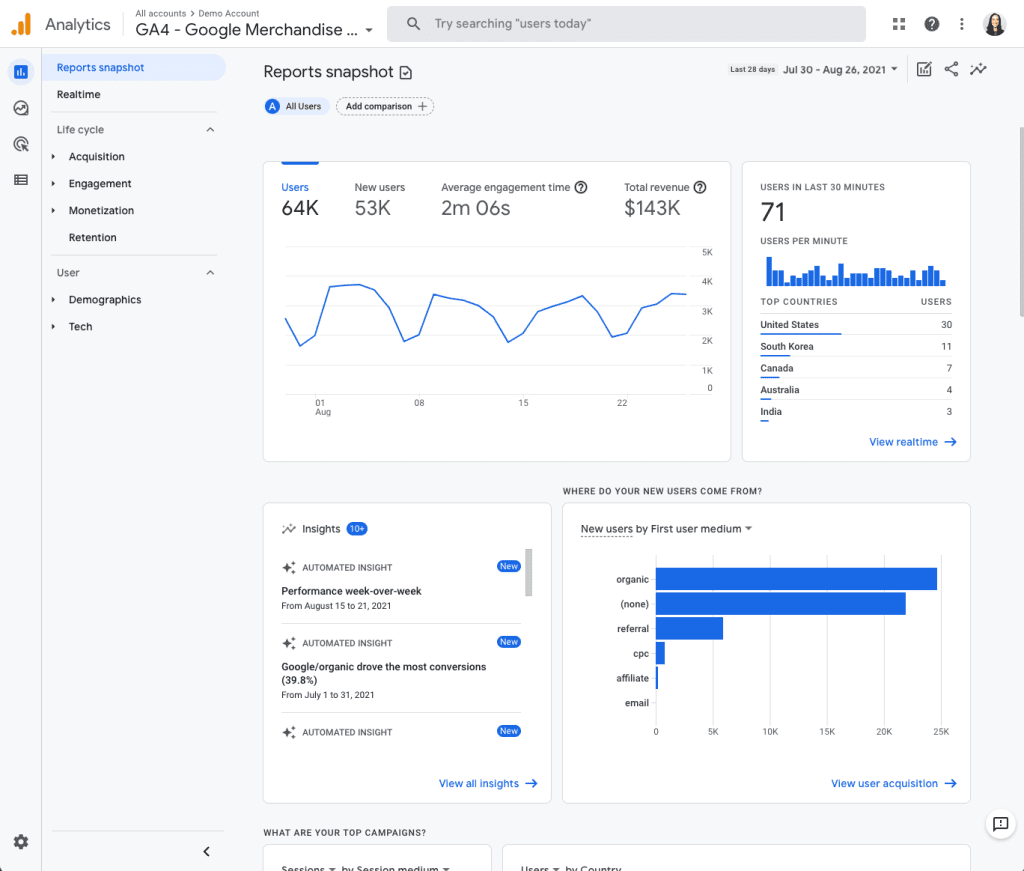
Conversion Tracking and Funnel Analysis
Goal Conversions
Set up and track conversion goals, such as sign-ups, trial activations, or purchases. This provides insights into the effectiveness of your SEO in driving desired actions.
Funnel Analysis
Examine the user journey through your website. Identify drop-off points in the conversion funnel and optimize pages to improve the overall conversion rate.
Example: Salesforce utilizes conversion tracking to measure the success of various lead generation goals.
Backlink Analysis
Backlink Profile Health
Regularly assess the health of your backlink profile. Tools like Moz or Majestic can help identify new backlinks, lost links, and the overall quality of your link profile.
Link Growth and Diversity
Analyze the growth and diversity of your backlink portfolio. A diverse and growing link profile contributes to improved SEO.
Example: Ahrefs’ Backlink Checker provides a detailed analysis of your backlink profile, including new and lost links.
Local SEO Metrics
Local Search Rankings
Monitor your local search rankings, especially if your SaaS company serves specific geographic regions. Tools like BrightLocal or Whitespark can assist in tracking local SEO performance.
Online Reputation
Keep track of online reviews, ratings, and brand mentions in local contexts. A positive online reputation contributes to local SEO success.
Example: Zendesk utilizes local SEO metrics to track the performance of its customer support solutions in different regions.
Mobile SEO Performance
Mobile Page Speed
Assess the mobile performance of your website, focusing on factors like page speed and mobile-friendliness. Google’s PageSpeed Insights can provide actionable recommendations.
Mobile Search Visibility
Monitor your visibility in mobile search results. Tools like MobileMoxie or Google’s Mobile-Friendly Test can help assess and optimize for mobile SEO.
Example: Slack optimizes its website for mobile users, ensuring a seamless experience across devices.
Competitor Analysis
Comparative Keyword Rankings
Compare your keyword rankings with those of your competitors. Identify opportunities to outperform them in specific areas.
Backlink Competitor Analysis
Analyze the backlink profiles of your competitors. Identify potential link-building opportunities and strategies to differentiate your link profile.
Example: Using Semrush, you can conduct in-depth competitor analysis, uncovering their keyword rankings and backlink strategies.
Data Security and Compliance
Secure Data Handling
Ensure compliance with data protection regulations, especially when dealing with user data. Securely handle and store analytics data to maintain user privacy.
GDPR and Privacy Compliance
Adhere to regulations such as the General Data Protection Regulation (GDPR). Implement measures to obtain user consent for data tracking and ensure compliance with privacy standards.
Example: Adobe incorporates GDPR-compliant data handling practices in its analytics and tracking processes.
Monitoring and analytics are integral to the success of your SaaS SEO strategy.
By diligently tracking key metrics, analyzing user behaviour, and staying informed about industry trends, your SaaS company can adapt and optimize its approach for sustained growth and visibility in the competitive landscape of 2024.
Conclusion
As we close the chapters of this comprehensive guide, it’s clear that SaaS SEO in 2024 demands a forward-thinking approach, driven by innovation and adaptability.
The digital landscape is evolving rapidly, and SaaS companies must navigate the intricacies of search engine optimization with strategic foresight.
Unveiling the Power of Content: A Cornerstone for Success
Content marketing emerges as a cornerstone in the SaaS SEO narrative, demonstrating its unparalleled ability to resonate with users and search engines alike.
From evergreen content strategies to the impactful use of multimedia and social media platforms, SaaS companies can wield the power of content to not only drive organic traffic but also to establish thought leadership and foster a dedicated user base.
By creating a content calendar, aligning content with user journeys, and exploring the potential of video and visual content, the SaaS SEO playbook unfolds with content as its central protagonist.
Forging Digital Alliances: Link Building Strategies Unveiled
Link building, the linchpin of SEO success, is unveiled as a nuanced art within the SaaS landscape.
Through strategic collaborations, guest posting, and the cultivation of authoritative backlinks, SaaS companies can elevate their digital footprint and build credibility in the eyes of search engines.
Mastering the Local Terrain: SaaS SEO with Geographic Precision
In the digital age, where boundaries blur and markets transcend physical locations, local SEO strategies emerge as a pivotal element for SaaS companies.
From optimizing Google My Business listings to incorporating localized keywords and monitoring online reviews, the guide illustrates how SaaS companies can tailor their SEO efforts to specific regions.
By embracing mobile optimization, local schema markup, and strategic partnerships with local businesses, SaaS platforms can enhance their visibility in target geographies, acknowledging the diverse and dynamic nature of local SEO.
The Symphony of Social Media and SEO: Harmonizing Digital Presence
In the grand symphony of SaaS SEO, social media takes center stage, harmonizing with SEO strategies to amplify brand visibility and drive engagement.
Through the lens of social signals, viral content, and targeted advertising, this guide illustrates how SaaS companies can leverage social platforms as potent tools for SEO success.
Navigating the Analytics Seas: Charting Success through Data
Monitoring and analytics form the compass guiding SaaS companies through the vast seas of digital data.
From tracking key performance indicators (KPIs) and user engagement metrics to analyzing backlink health and local SEO impact, the guide illuminates the importance of data-driven decision-making.
By wielding tools like Google Analytics, Ahrefs, and Semrush, SaaS companies can navigate the analytics landscape with precision, allowing them to continually refine and optimize their SEO strategies.
Envisioning the Future: SaaS SEO Beyond 2024
As we envision the future, it becomes evident that the SaaS SEO journey is an ever-evolving expedition.
Embracing innovation, staying attuned to industry shifts, and fostering a culture of continuous improvement are imperative for SaaS companies aspiring to thrive in the dynamic digital realm.
The guide concludes by recognizing that SEO is not a destination but a perpetual journey, an expedition toward digital excellence and sustained growth. Here’s to conquering the peaks of SaaS SEO success in 2024 and beyond.
If you are looking for a top-class digital marketer, then book a free consultation slot here.
If you find this article useful, why not share it with your friends and business partners, and also leave a nice comment below?
We, at the AppLabx Research Team, strive to bring the latest and most meaningful data, guides, and statistics to your doorstep.
To get access to top-quality guides, click over to the AppLabx Blog.
People also ask
What is SEO in SaaS?
SEO in SaaS, or Software as a Service, refers to the strategic optimization of online content and digital assets to enhance visibility on search engines. By employing targeted keywords, optimizing website structure, and leveraging various SEO techniques, SaaS companies aim to rank higher in search results, driving organic traffic, and boost their online presence. This ensures that their software solutions are easily discoverable by potential users in the competitive digital landscape.
What are SEO keywords for SaaS?
SEO keywords for SaaS include terms relevant to software solutions, features, and industry-specific phrases. Examples include “cloud-based collaboration,” “CRM software,” “project management tool,” and “SaaS analytics platform.” Targeting these keywords helps SaaS companies rank higher on search engines, attracting users actively searching for their products or services.
Why is SEO important for B2B SaaS?
SEO is crucial for B2B SaaS as it enhances online visibility, making the software easily discoverable by businesses searching for solutions. A well-optimized website increases brand credibility, attracts targeted leads, and ensures a competitive edge in the crowded digital marketplace, ultimately driving conversions and business growth.






























